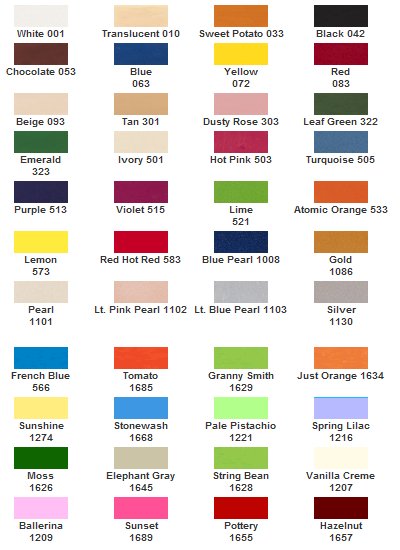Whenever I create something out of polymer clay (usually little birdies destined to sit on top of a wedding cake), choosing the type and brand of clay can be surprisingly important. Here is a list of some of the most popular polymer clays out there, and how they stack up.
Sculpey III
I may be biased, because the majority of the things I make are made out of Sculpey, but I consider it to be the gold standard for polymer clay. They have a great selection of colors, and it’s affordable. Each color comes in a 2 ounce package, which can be purchased for $2 or less. Select colors also come in 8 ounce and one pound bars. They offer a number of sets and multi-packs as well. I do find the 8 ounce bars to be softer than the smaller packages, and can become a little sticky at times if you’re handling it a lot. However, the softness can be helpful when you’re making larger pieces, as you don’t have to work the clay too much.
Sculpey III bakes at 275ºF for 15 minutes per quarter inch thickness. I usually bake my cake toppers for 45 minutes to an hour. The 2 ounce bars are divided into four sections, which makes it easy to divide and break up.
Sculpey III comes in 44 colors:
You can see the colors better here. The Sculpey website also provides a color mixing chart. I find that they have most of the colors I look for or need, and the colors turn out well after being baked.
The Sculpey III line can be found at Hobby Lobby as well as Michaels.
Fimo Soft
Fimo Soft was created as an alternative to Fimo Classic, and you can guess by their names, Classic is much firmer and can be a little more difficult to manipulate. Fimo Soft, however, is, you guessed it, soft! It’s also a smooth clay. It is baked at 265ºF for30minutes. Like Sculpey, Fimo comes in 2 ounce bars, but some colors also come in 12.5 ounce bars. The 2 ouncers come in 8 segments. It is a little more expensive than the Sculpey III though.
Fimo Soft comes in 48 colors:
Including a number of special effects colors:
It’s hard to tell here, but the special effects colors are very pretty. Fimo Soft is a nice clay to work with, with many great colors (both standard and specialty).
Here is the Fimo Soft collection at Hobby Lobby and Michaels.
Premo
Premo is made by Sculpey, so you can expect good quality. Like Sculpey III, Premo is offered in 2 ounce and 1 pound bars, and the standard 2 ounce bars are segmented into 4 sections. It is baked at 275ºF for 30 minutes per 1/4 inch thickness. The main difference is that Premo is a little bit firmer than Sculpey III.
Premo recently unveiled a new color chart for 2011, which includes 48 colors:
While Premo is firmer than Sculpey III, I think they offer more in the color department, especially with their new colors that include the pearls, translucents, metallics, glitter and granite colors. I will say the pearls are very nice, if you want to add a little sheen or pop to your color without going all out with the glitter.
Sculpey also provides a color mixing chart for its Premo clay.
Premo can be found at Hobby Lobby and Michaels.
Kato Polyclay
Kato Polyclay is a newer clay on the market. It is a little firmer than some of the others, but is still easy to condition and form. The Kato website says that this clay can be cured anywhere from 275-300°F, for 30 minutes per ¼ inch thickness.
Although all colors initially came in 3 ounce blocks, they ditched that in order to be more consistent with the other clays on the market, and all colors now come in the standard 2 ounce blocks. Some colors come in 12.5 ounce bricks as well.
Kato Polyclay is available in 21 colors. The main colors (which they specify as spectral, neutral, and metallic) can be seen here:
The remaining four colors, which you can sort of see below, are green, yellow, red, and blue concentrate.
You can find Kato Polyclay at Hobby Lobby.
While almost all of these brands can be found at both Michaels and Hobby Lobby, I’ve noticed lately that Michael’s has been upping the prices and decreasing the selection of most of the other clays in favor of their house brand, Craft Smart (which I’ve not yet tried) – so that is kind of a bummer!
Which polymer clay(s) do you use?









